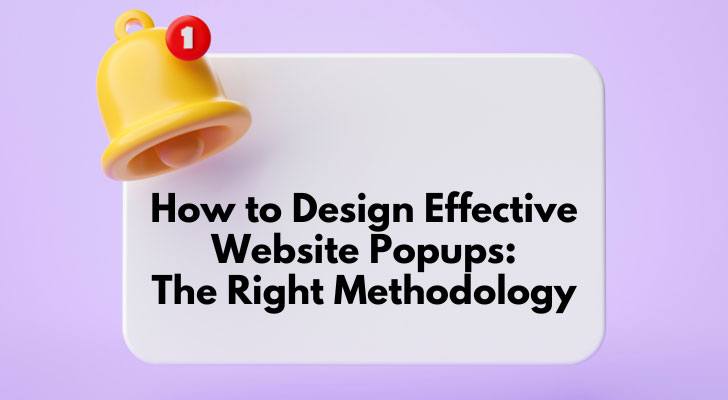Pop-up ads on websites frequently have the opposite impact of what you intended. They could irritate, intrude, or annoy visitors. Too often they put your goals ahead of the preferences and experiences of the audience. However, with carefully planned and executed Claspo popup samples, your website pop-ups will continue to be a useful marketing tool that doesn't annoy your customers, interfere with their surfing, or damage your brand.
What is a pop-up?
Did You Know?
- Average Conversion Rate: Website popups average a 3.09% conversion rate across industries.
- Top Performing Popups: The top 10% of popups have a conversion rate of 9.28%.
- Timing Matters: Popups displayed for 4-5 seconds tend to have the highest conversion rates.
- Impact of Delay: Delaying a popup until a user has been on the site for 20 seconds can increase conversions by 2x.
- Exit-Intent Success: Exit-intent popups can recover 10-15% of lost visitors.
- Mobile vs. Desktop: Mobile popups have a lower average conversion rate (2%) compared to desktop (3.5%).
- Email Collection: Over 50% of businesses use popups to collect email addresses.
Pop-ups on websites are variously formatted display windows that appear "on top" of a page. They may do all of the above, as well as promote a particular call to action, offer specialized content, or gather visitor data.
What benefits do pop-ups offer?
Gathering Contact Info
First up, we've got the classic move of asking for your contact details. I think we've all seen this one. It's like when someone at a party wants to stay in touch because they think you're cool. Here's why it's a smart play:
- Building Connections: When a website asks for your email, it's their way of saying, "Hey, let's keep this conversation going." It's a starting point for all sorts of interactions, from newsletters to special offers.
- Marketing Magic: For the site owners, having your contact info is gold. It means they can tailor their messages to you, making sure you're in the loop on stuff you actually care about. Pretty neat, right?
Offering the Inside Scoop
Pop-ups can be a treasure trove of info on stuff you're into. It's like finding a guidebook when you're lost in a new city.
- Right Info, Right Time: Say you're browsing a travel site, and a pop-up offers tips on the best local eats. That's not just helpful; it's gold.
- Deep Dives: Sometimes you're on a site, and a pop-up offers a deeper look into something you're just casually interested in. Before you know it, you're hooked. It's all about giving more without making you search for it.
Clear Messages and Actions
Pop-ups are like those billboards you see on the highway, hard to ignore and straight to the point.
- No Beating Around the Bush: With a clear message, you're not left guessing. It's like, "Here's what we've got, and here's what you can do with it."
- Calls to Action: These are your signposts. They tell you where to go next, whether it's signing up for a webinar or grabbing a discount. It's guidance right when you need it.
Showcasing Extra Value
Here's where pop-ups really shine. They're like your friend who always knows about the best deals and shares them with you.
- Exclusive Offers: Ever get a pop-up that offers you a deal just because you're browsing? That's the site's way of saying, "Thanks for stopping by."
- Highlighting Benefits: Sometimes you don't realize all the cool stuff a site offers until a pop-up points it out. It's a quick way to see the perks, making you more likely to stick around.
Keeping Visitors Engaged
Last but not least, pop-ups can be a secret weapon for keeping you on a site longer.
- Engagement Boosters: A well-timed pop-up can turn a quick visit into a deep dive. Before you know it, you're exploring sections of the site you didn't even know existed.
- Interactive Elements: Some pop-ups have quizzes or polls, which can be pretty fun. It's like getting a mini-game in the middle of your browsing session.
So, you see, when pop-ups are used wisely, they're not just a distraction. They're like those helpful hints in a video game, guiding you, offering you bonuses, and making the whole experience more rewarding. Isn't it cool how something so small can make a big difference?
What harm may pop-ups cause?
I think we've all had our moments with them, right? Sometimes they can be helpful, but other times, they might cause a bit of a stir. So, let's dive into some of the downsides of using popups on websites.
Messing with the Flow
Ever been deep into reading an article or checking out a product, and suddenly, bam, a popup appears? It's a bit like someone jumping into your conversation uninvited, isn't it? Here's the deal:
- Interrupting the Experience: Just when you're getting to the good part, a popup can break your focus. It's like watching a movie and having the ads roll in at the climax scene.
- Navigation Troubles: Especially on mobile, where screen space is premium, popups can make it hard to see the content or find the tiny "X" to close them. It's a bit of a maze, you see?
Not So Great on All Devices
Think about the last time you tried closing a popup on your phone. A bit of a task, wasn't it? Popups don't always play nice with different devices.
- Mobile Frustration: On smaller screens, popups can take up all the space. It's like trying to read a book through a keyhole.
- Tablet Tantrums: Even on tablets, where there's more screen real estate, popups can disrupt the flow of what you were doing. It's all about the smooth experience, right?
Driving Visitors Away
Now, this is a biggie. You've got this cool website, and you want people to stick around, but then popups come into play.
- Bouncing Off: If the first thing a visitor sees is a popup, they might just bounce right off your site. It's a bit like going for a handshake and getting a high-five instead.
- Leaving the Scene: High bounce rates from annoyed visitors could mean fewer people sticking around to see what you're all about. Not the best first impression, huh?
Misreading the Audience
This one's a bit tricky. Sometimes, what we think is a cool way to engage with visitors doesn't really hit the mark.
- Guessing Game: Assuming everyone will love your popup because it has a great offer might not be spot on. It's a bit like assuming everyone loves pineapple on pizza.
- Engagement Misfire: You might think your popup is the next big thing, but if it's not what your visitors are looking for, it might just fall flat. It's all about matching vibes, isn't it?
Since there is so much potential for success but also so much that may go wrong, you must know how to reduce the risks and maximize the chances.
1. Make them contextual
In the real world, it matters who you sell to, what you sell, and how you sell it: Ferraris won’t be sold to the residents of nursing homes.
Making your pop-ups unique is similar. Your website is essentially a digital showroom. When done correctly, you may enhance your conversion rates while increasing relevancy and reducing any irritation.
Pop-ups have evolved significantly from their original one-size-fits-all design. You may now offer extensive customization around things like:
- Those visitors who notice the pop-up;
- Information that those visitors view;
- The pages that visitors view them on;
- The intervals at which pop-ups appear.
For example, a pop-up inviting visitors to sign up for your newsletter on an educational content page makes considerably more sense than making the same offer on the privacy policy page.
Did You Know?
- Discount Offers: Offering discounts through popups can increase conversions by up to 10%.
- Size and Conversion: Smaller popups (covering 10-20% of the page) tend to have higher conversion rates.
- Frequency Impact: Showing a popup to the same visitor multiple times decreases its effectiveness by 50% after the first view.
- E-commerce Popups: E-commerce sites see an average conversion rate of 5.1% from popups.
- Content Relevance: Popups with content related to the page or user's browsing behavior have 30% higher conversion rates.
- A/B Testing: Websites that A/B test their popups see a 30-50% increase in effectiveness.
2. The Timing
You didn’t ask your partner to marry you on the first date, accordingly you shouldn’t hit your website visitors with an obtrusive pop-up the second they arrive on a page. Visitors are far more likely to appreciate your pop-ups if they are displayed during strategic times when they are surfing your site.
The amount of time spent on each page varies depending on the page. Your greatest guide for when to display your pop-up would be to have a clear idea of how much time a typical visitor spends on a certain page, as well as taking into account the page's actual content.
3. Be different
The rising tendency of website users to ignore banner adverts was one element that fueled the early spread of pop-ups. Similar to how pop-ups are losing their effectiveness, your audience is also getting less interested in them and shutting them off without reading the content.
Presenting visitors with something different from the innumerable pop-ups they've undoubtedly dismissed can help you capture their attention.
4. Be clear in your offer and its benefits
Pop-ups are thought to be a cheeky way of saying, "I know you're busy reading about something else and this is why you came to the site in the first place, but I couldn't help but interrupt that experience because I have something that I am POSITIVE you're going to be glad I told you about at THIS VERY MOMENT!"
If that's the premise, you'd better have some solid evidence to support it. How? Offer these to your visitors:
- An obvious offer;
- Clear advantages;
- A simple call to action.
5. Be multi device-friendly

Image by rawpixel.com on Freepik
Google warned a few years ago that it would punish websites that negatively impacted the mobile surfing experience. Unwelcome pop-ups can reduce the accessibility of websites.
Test pop-ups first to see how they appear on desktop and mobile browsing before publishing them. Make "lighter" mobile-friendly pop-ups in addition to the ones you normally develop for desktop computers.
Did You Know?
- Compliance: Following GDPR guidelines, only 42% of popup forms include a checkbox for consent.
- Scroll-Triggered Popups: Popups triggered by scrolling down the page have an average conversion rate of 2.6%.
- Lead Generation: 67% of marketers find popups effective for lead generation.
- Abandoned Cart Popups: For e-commerce, abandoned cart popups can save 10% of transactions.
- Interactive Popups: Popups with interactive elements like quizzes can see conversion rates of up to 50%.
- Video Popups: Including a video in popups can increase conversions by up to 80%.
- Color Psychology: Changing the color of a popup button can increase conversions by 21%.
6. Test
Numerous elements make up a pop-up, including the title, copy, graphics, offer, form fields, size, time of display, location, etc. If you get even one of these details incorrect, it might be the difference between a pop-up that attracts visitors and one that repels them.
Create evidence-based hypotheses for each component, just as any smart marketer would, but never let those hypotheses stand as the final word on accuracy. What aspects of the pop-up can be made better if it isn't working? And if the pop-ups are effective, how can they be improved yet further?
A/B testing is supported by a lot of pop-up generation programs. Use that characteristic to your advantage. In any case, run numerous tests and make gradual adjustments to the various components until you find the ideal pop-up with the highest conversion rate.
Conclusion
The average pop-up conversion rate, according to Sumo, is 3.1%, whereas high-performing pop-ups often convert at a rate of 9.3%. With a 3% conversion rate, what might you accomplish? What about a rate of 9%?
Such thrilling possibilities must be matched with protections that stop these same goals from putting off visitors with intrusive pop-up windows. By adhering to the aforementioned rules, you may minimize the chance of upsetting your valued website visitors, while simultaneously optimizing their browsing experience to provide them with the most benefit possible.
How I "Finally" Make Over $7,000 Monthly Income
"The most valuable thing I've ever done!"





